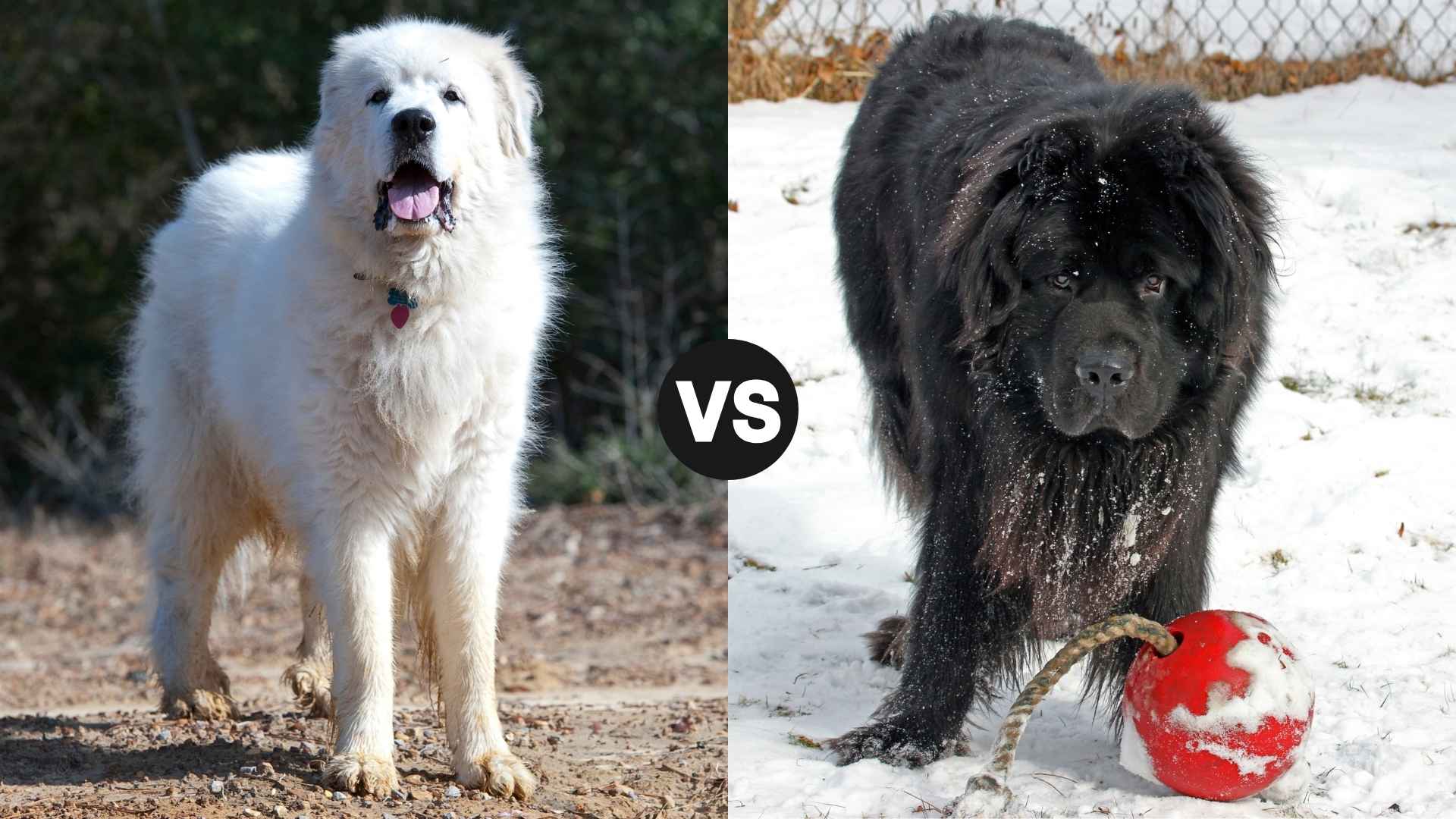You see a Great Pyrenees and a Newfoundland for the first time, and both seem too good to be true. Big, beautiful, calm—and just so lovable.
You picture them in your home, stretched across the floor, kids climbing over them, peace all around. But the truth hides in the details. Because what they do after the first impression can either fit right into your life, or flip everything upside down.
You’re not choosing between two teddy bears. You’re choosing between two working dogs with different jobs, instincts, and daily behaviors. The quietest one may bark the most. The friendliest one may drool on your couch.
So, before you decide based on looks or size, stick around. We’re breaking down their personalities, history, grooming needs, energy, and much more. By the end, you won’t just like one—you’ll know exactly which one’s right for you.
Great Pyrenees vs. Newfoundland
Physical Appearance: Great Pyrenees vs. Newfoundland
Size and presence that commands attention
Both are large and powerful, but Newfoundland dogs tend to be heavier and more robust overall. The Great Pyrenees appears more angular and athletic, with a slightly longer frame, as stated in the Great Pyrenees Club of America. Their massive size and calm stance add to their impressive dog breed appeal.
Coat type and texture differences
The Great Pyrenees has a thick, weather-resistant double coat that feels slightly coarse. Newfoundland dogs, on the other hand, have a softer, water-repellent coat, originally meant for icy swims, as highlighted by Purina. Grooming needs vary slightly due to these coat textures and densities.
Color patterns and expressions
Great Pyrenees are often seen in white or cream shades, while Newfoundlands come in black, brown, or Landseer. Their facial expressions differ too—Newfoundlands tend to look more gentle and soulful. These small touches highlight each breed’s unique characteristics.
Structural features and build
The Great Pyrenees carries a more graceful build, with a proud head and feathered tail. Newfoundland dogs are stockier, with broad chests and a fuller muzzle. Each structure reflects the specific work these breeds were originally developed for.
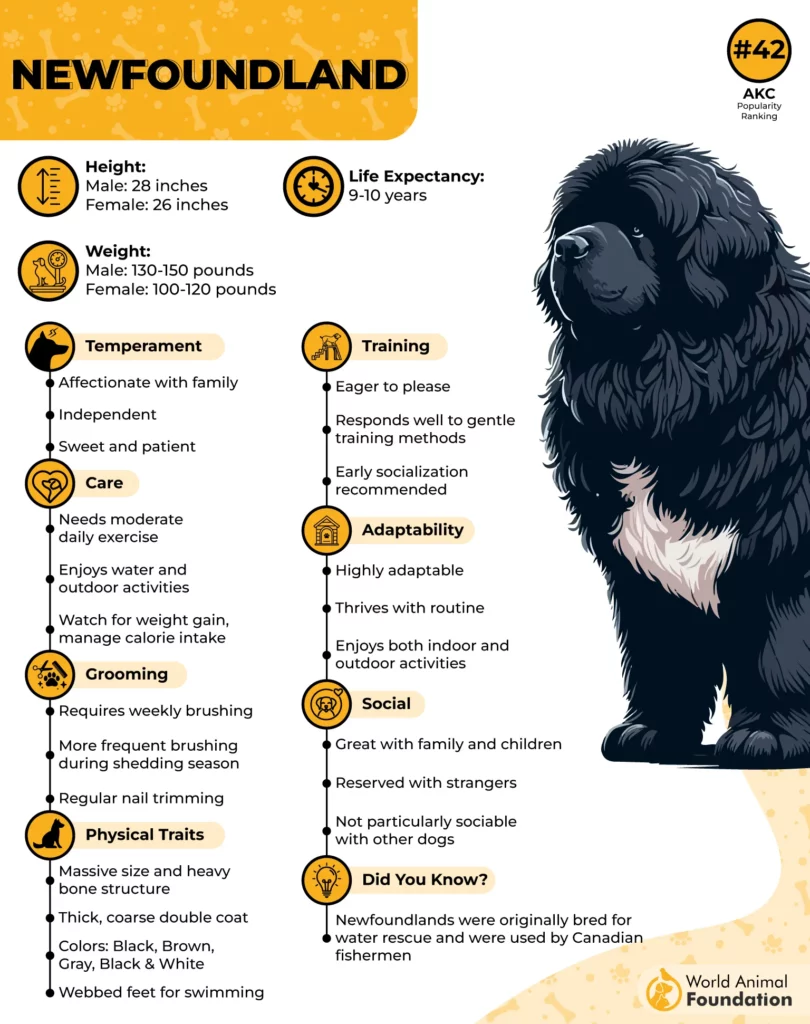
Temperament and Personality Traits
Calm but Watchful (Great Pyrenees)
The Great Pyrenees carries a calm, independent temperament rooted in its guardian background. While it’s affectionate with its family, it tends to be reserved with strangers unless well-socialized. Early socialization helps ease this guarded nature, especially in homes with other pets.
Gentle and Affectionate (Newfoundland)
Newfoundlands are known for their sweet, gentle nature and deep loyalty to their humans, as WebMD claims. They’re highly pet-friendly, making them easy to integrate into households with kids and animals. These dogs are rarely reactive, often acting more like a calm presence than a protector.
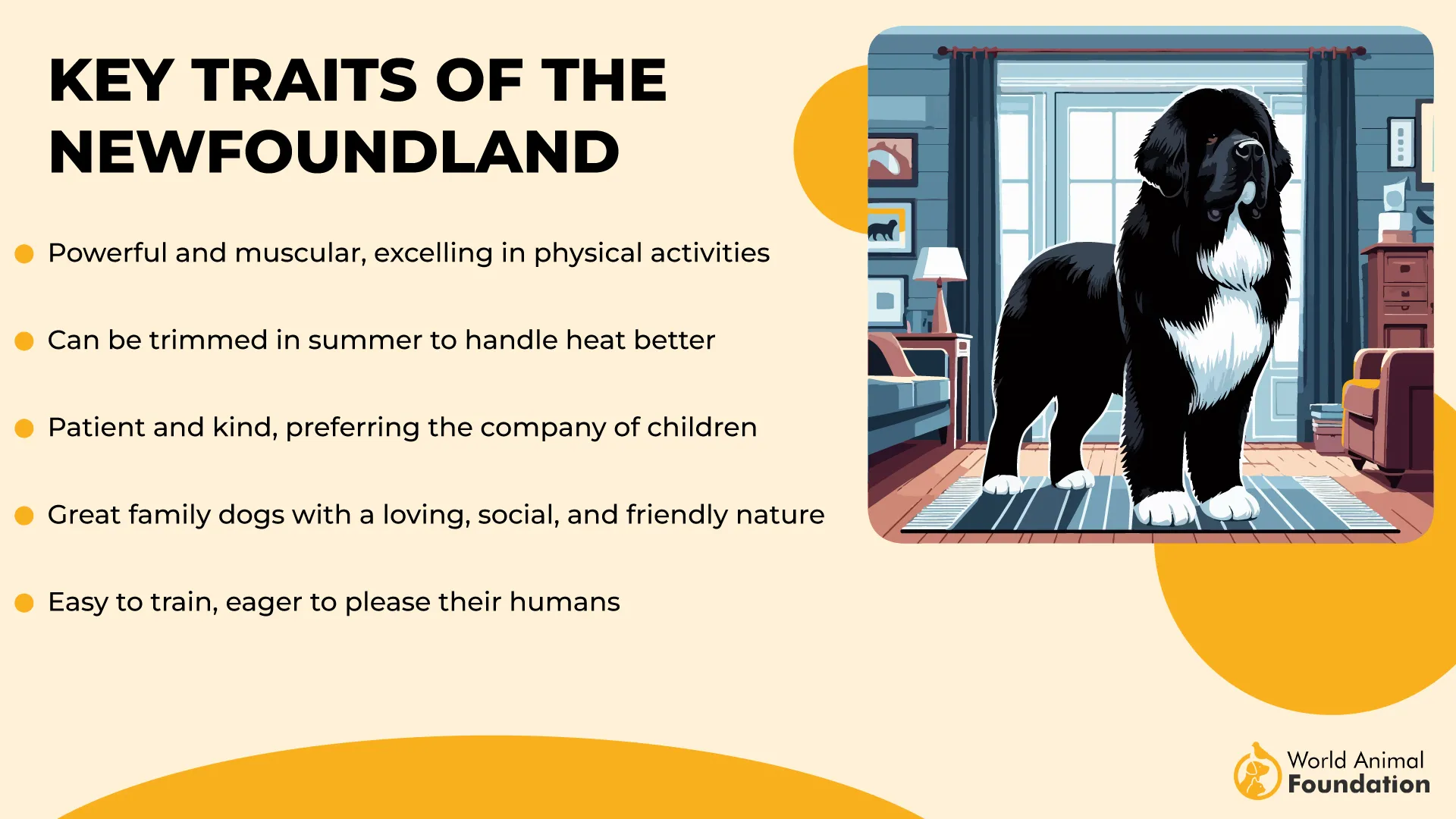
Coexisting with Other Pets
According to PetMD, the Great Pyrenees can coexist with other dogs when introduced gradually and consistently. Their protective instincts might kick in at times, so steady guidance matters. With proper boundaries, they can adapt to living peacefully with other pets in the home.
Social and Loyal by Nature
Newfoundlands thrive around people and are often described as great companions due to their gentle loyalty. They generally accept other dogs easily and don’t compete for dominance. This makes them a favorite among pet owners who value calm and harmony in multi-pet homes.
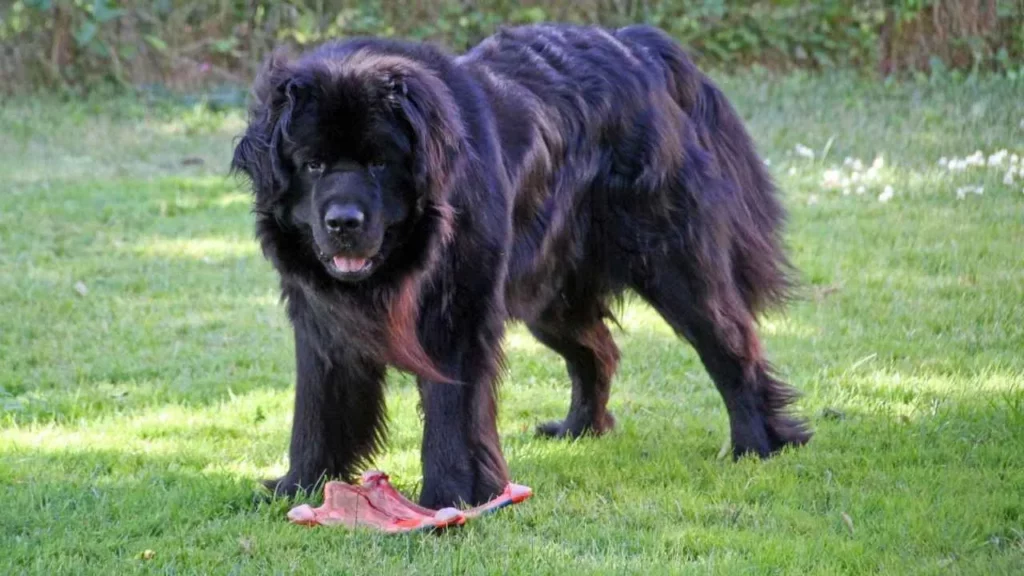
Lifespan and Longevity
Built for endurance, not speed
Great Pyrenees dogs typically live around 10–12 years, while Newfoundlands often reach 8–10 years. The difference partly stems from their size and structural build. Both breeds are large, but the Newfie’s heavier frame can make it more prone to joint stress and heart issues.
How does lifestyle impact years
A healthy diet and daily exercise play a major role in extending either breed’s lifespan. These aren’t high-energy dogs, but they do need moderate exercise to stay mobile and keep weight in check. Their joints benefit from movement, but overexertion should always be avoided.
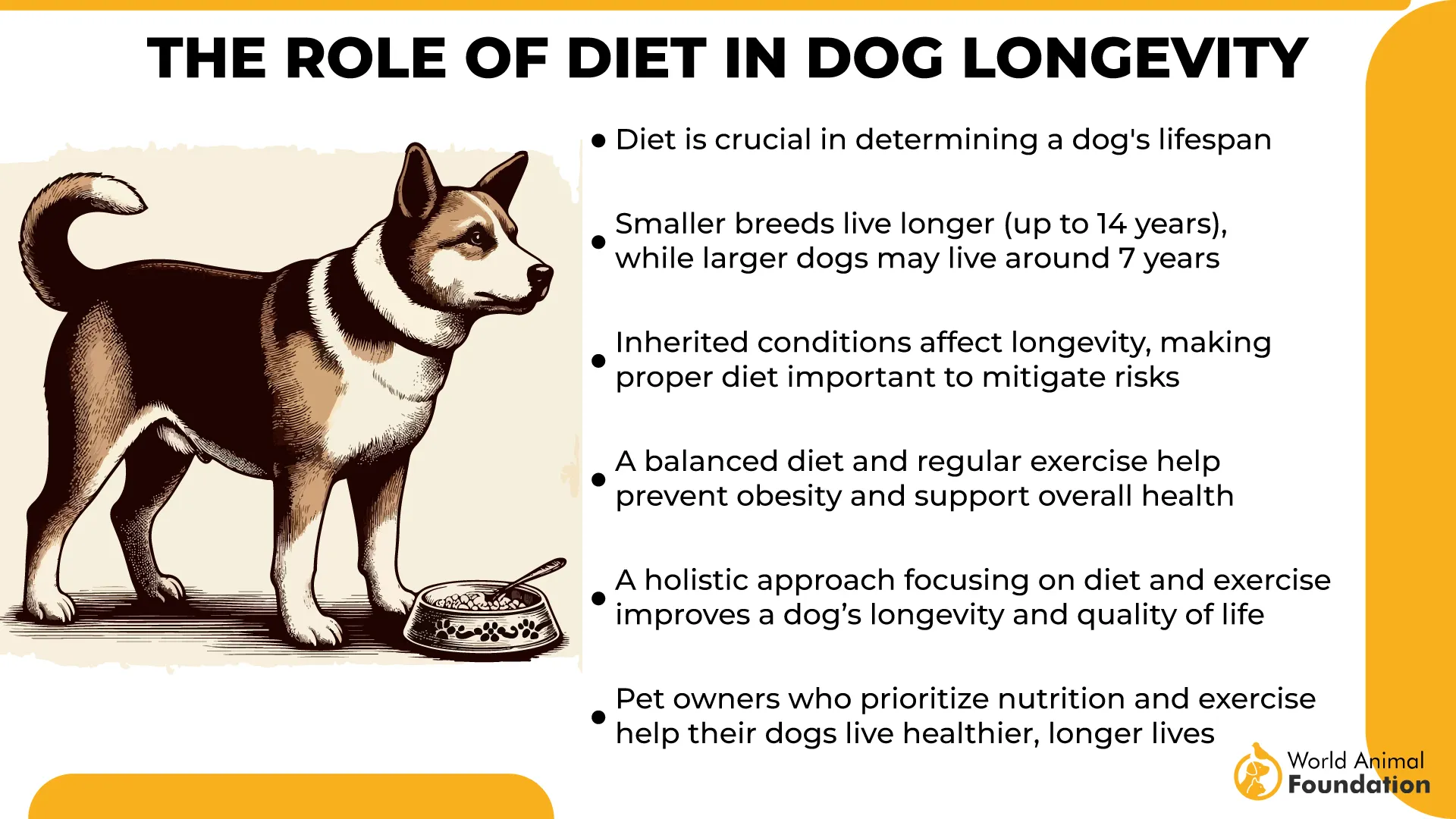
Genetic factors and health habits
While both are considered generally sturdy, Great Pyrenees dogs are often seen as a more naturally healthy breed. Regular vet checks, joint supplements, and even daily grooming can prevent minor issues from becoming chronic. Grooming also helps catch lumps or skin conditions early.
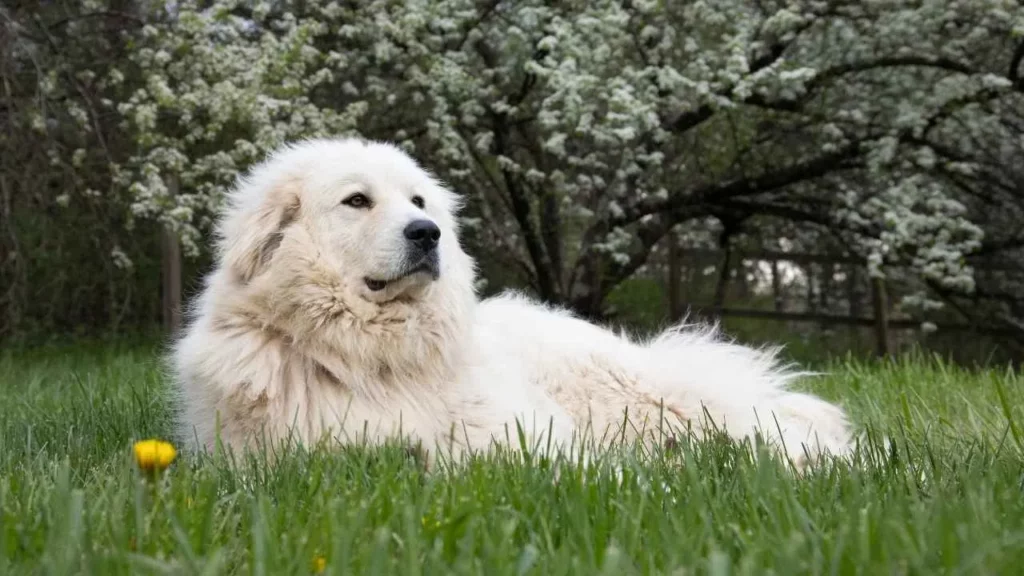
Finding the right balance
Choosing the right dog comes down to more than just looks—it’s about your lifestyle, time, and long-term commitment. A Newfoundland might need more daily grooming, while Great Pyrenees dogs may do better with open space and independence. Either way, longevity thrives on consistency.
Drooling Tendencies and Cleanliness
Mess level around the mouth
The Newfoundland breed is well known for its constant drooling, especially after drinking or during excitement, as highlighted by Chewy. Their large jowls don’t retain saliva well, so expect frequent wipe-downs. It’s something pet parents must be ready for daily.
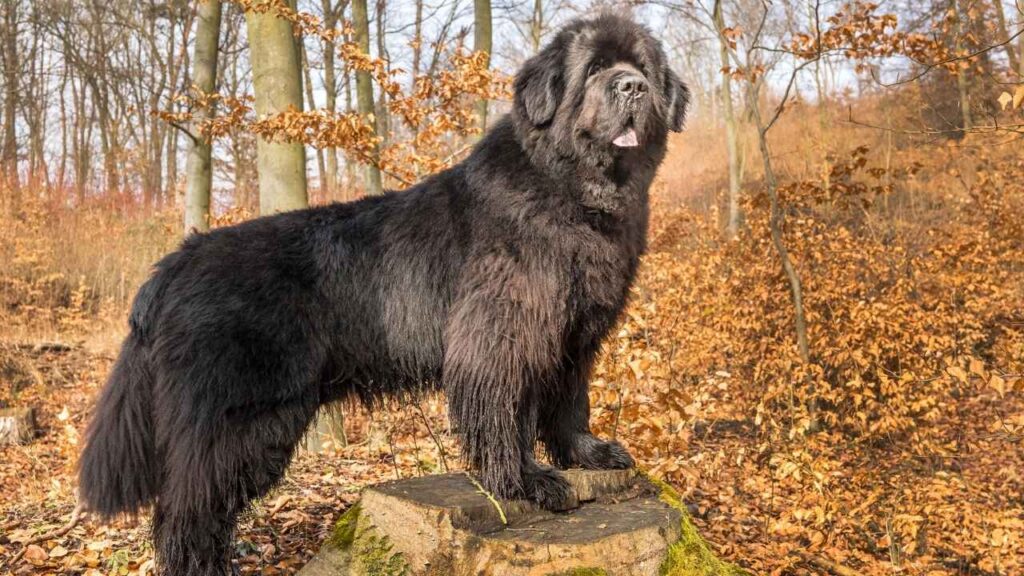
Cleanliness challenges
Maintaining hygiene with this breed includes regular cleaning of drool-prone areas to avoid skin issues. Their thick coat also traps dirt and moisture, which requires extra attention. Grooming isn’t optional—it’s essential to keep things in check.
How the Pyrenees compare
The Great Pyrenees breed drools far less, mostly after eating or exercising, and it’s more manageable overall. Their cleaner habits make them easier to maintain indoors. That said, their double coat still calls for regular grooming and upkeep.
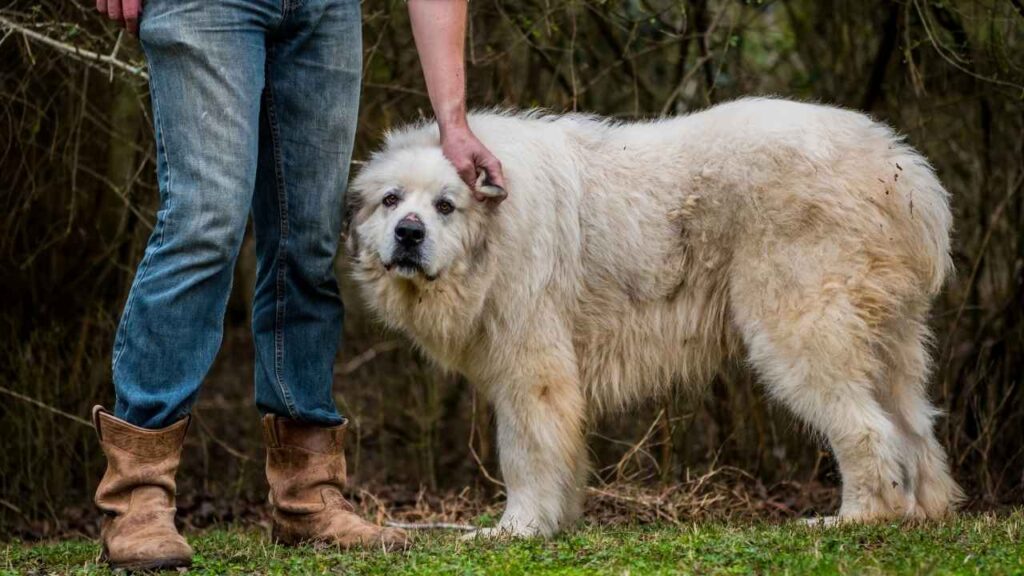
What pet parents should expect
Between the two, the Newfoundland adds more mess to daily life, from drool on walls to soaked furniture edges. The Pyrenees is neater but still sheds heavily. Either way, pet handlers need to stay consistent with grooming and household care.
Vocalization and Barking Behavior
Natural tendencies and communication style
Both are known for being vocal, but in different ways. One tends to use its voice to alert and protect, while the other uses low rumbles and deep barks. These vocal patterns reflect their guarding instincts and the environments they were bred for.
What influences their barking habits
As large dog breeds, their voices carry and can be intense without proper guidance. Early training helps manage when and why they bark, especially in family settings. Without it, their natural alertness can easily turn into excessive noise.
How they respond to their surroundings
One reacts quickly to unfamiliar sounds or movements, making it more active in barking situations. The other observes first, barking only when it truly senses a need. These key differences matter when choosing based on neighborhood and lifestyle.
Managing vocal energy in daily life
Consistent routines, physical activity, and social exposure reduce unnecessary barking. Structured environments help them channel energy without constant vocalizing. With time and effort, both can be shaped into calm, respectful companions.
Conclusion
In the end, both the Great Pyrenees and the Newfoundland bring something special to the table. One thrives on independence, while the other leans into companionship.
What matters most is what fits your rhythm—your space, your time, your energy. These large breeds need structure, love, and patience. Daily care, like frequent brushing, especially during shedding season, keeps their coats healthy.
Obedience training with positive reinforcement can make the biggest difference in shaping their calm personalities. Though both may face health conditions over time, consistent care and awareness go a long way.
Choose with your lifestyle in mind, and you’ll gain more than a pet—you’ll gain a lifelong presence.


